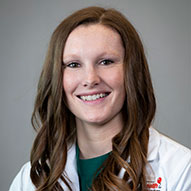Plano
469-303-3000
Fax: 469-303-4520
Frisco
469-303-3000
Fax: 469-303-4520
Prosper
469-303-3000
Fax: 469-303-4520
Request an Appointment with codes: Andrews Institute (Sports Medicine)
469-303-3000
Fax: 469-303-4520
469-303-3000
Fax: 469-303-4520
469-303-3000
Fax: 469-303-4520
Request an Appointment with codes: Andrews Institute (Sports Medicine)
At the Children’s Andrews Institute, our highly trained team of orthopedic and sports medicine specialists has expertise treating kneecap instability and dislocation with noninvasive therapies and minimally invasive surgery.
Kneecap instability occurs when the kneecap (patella) is misaligned, allowing it to move side to side, rather than up and down in the joint. When an unstable kneecap fully slips out of place, it’s called a dislocation.
To provide your child with the best care possible, we offer the full range of services in one convenient location, including:
Signs and symptoms of kneecap instability and dislocation include:
Sometimes, a dislocated knee may temporarily move back into place. Even if this happens, we advise parents to seek treatment as soon as possible. Your child may still have knee damage that needs comprehensive treatment.
Our physicians diagnose kneecap instability or dislocation by starting with a physical examination. They may also order imaging tests to determine the problem with your child’s knee.
Tests may include:
Kneecap instability and dislocation are common pediatric injuries because children’s growing bones, ligaments and tendons can make the joint unstable.
Common causes of kneecap instability and dislocation include:
Girls face a greater risk of kneecap instability and dislocation because of anatomical differences like pelvic width.
At the Andrews Institute, we take a multidisciplinary approach to treating children with kneecap instability and dislocation. We bring together orthopaedic and sports medicine specialists and in-house physical therapists for your child’s ongoing care.
Treatment for kneecap instability and dislocation depends on the severity of your child’s injury. Most often, our physicians can use therapies that avoid surgery.
Nonsurgical treatments include:
For chronic kneecap dislocation, we may recommend surgery to repair damaged muscles, tendons or ligaments. If surgery is needed, our surgeons offer a minimally invasive arthroscopic approach.












Ensuring your child learns proper mechanics and techniques when exercising or playing sports will help protect the knee. Also, children who perform strength and stability exercises are less likely to suffer from kneecap instability or dislocation because of strong, stable muscles.
Learn more about kneecap instability and dislocation in children: